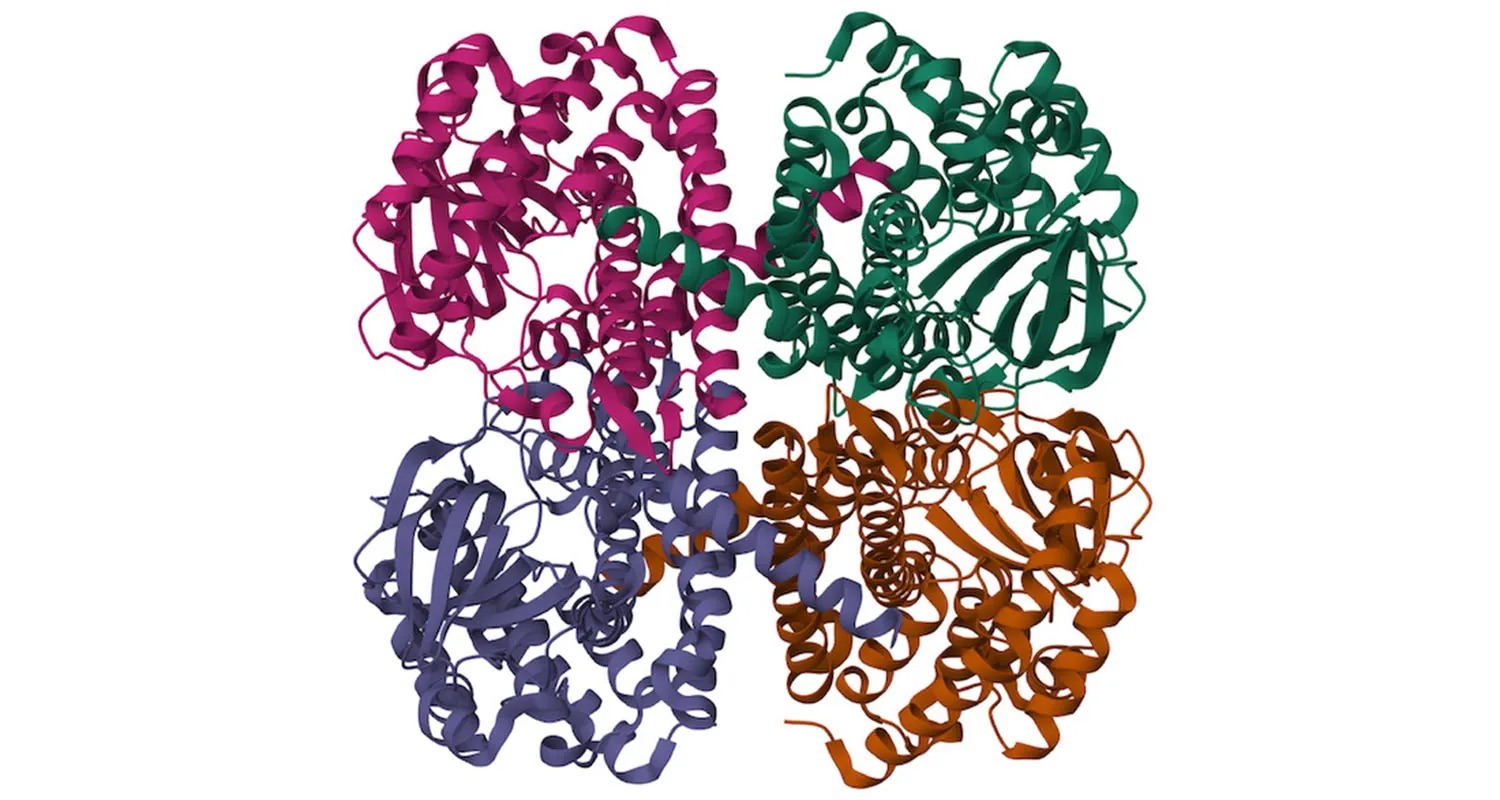29 Why This Chapter?

Figure 29.1 Acyl CoA dehydrogenase is an enzyme that catalyzes the introduction of a C═C double bond into fatty acids during their metabolism. (credit: modification of image from the RCSB PDF (rcsb.org) of PDB ID 2WBI. Muniz, J.R.C., Guo, K., Savitsky, P., Roos, A., Yue, W., Pilka, E., Vondelft, F., Edwards, A.M., Bountra, C., Arrowsmith, C.H., Weigelt, J., Oppermann, U. Crystal structure of human Acyl-CoA dehydrogenase 11)
In this chapter, we’ll look at some of the pathways by which organisms carry out their chemistry, focusing primarily on how they metabolize fats and carbohydrates. The treatment will be far from complete, but it should give you an idea of the kinds of processes that occur.
Anyone who wants to understand or contribute to the revolution now taking place in the biological sciences must first understand life processes at the molecular level. This understanding, in turn, must be based on a detailed knowledge of the chemical reactions and pathways used by living organisms. Just knowing what occurs is not enough; it’s also necessary to understand how and why organisms use the chemistry they do.
Biochemical reactions are not mysterious. Even though the biological reactions that take place in living organisms often appear complicated, they follow the same rules of reactivity as laboratory reactions and they operate by the same mechanisms.
Some of the molecules we’ll be encountering are substantially larger and more complex than those we’ve been dealing with thus far. But don’t be intimidated; keep your focus on the parts of the molecules where changes occur, and ignore the parts where nothing changes. The reactions themselves are exactly the same additions, eliminations, substitutions, carbonyl condensations, and so forth, that we’ve been dealing with all along. By the end of this chapter, it should be clear that the chemistry of living organisms is organic chemistry.

